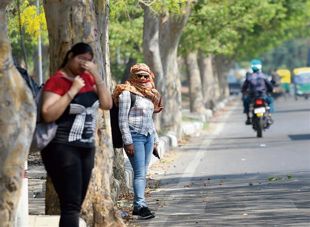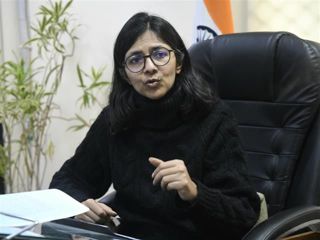
The US dalliance is meant to cut its losses while India focuses on internal consolidation.
Sandeep Dikshit
PM Narendra Modi’s peregrination to South East Asia saw him crossing paths with US Defence Secretary James Mattis. This meeting was out of form. Rarely does a US Defence Secretary meet a third world head of government in another country unless a large military hardware order is at stake.
Mattis has several reasons to worry. The first is, of course, the self-inflicted goal as a result of the relentless Trump vs Democrat battle. It has spawned the Countering America’s Adversaries Through Sanction Act (CATSA). Simply put, the American law will put a huge spanner in India’s exercise of freedom to purchase defence equipment and oil from whichever country it pleases. Two countries in CATSA’s cross-sights are Russia and and Iran. The penalty for trade with them, especially in energy and defence equipment, will attract American wrath.
The US would hardly have missed the shot across its bows fired by External Affairs Minister Sushma Swaraj which might explain Gen (retd) Mattis’ audience with PM Modi in Singapore. “We only recognise UN sanctions. We do not recognise any country-specific sanctions,” Sushma Swaraj replied when asked about the impact of US sanctions on Iran. If India is willing to stand up to the US on its sovereign freedom to engage with Iran which is merely a work-in-progress, it definitely has much more at stake to keep intact its momentum with Russia which has an infinitely deeper engagement with India’s critical segments of national security that need no recounting.
The first Russian military platform that can come in conflict with the American law is the S-400 missile defence system. India has already flagged defiance by letting it known that the internal processes for its purchase are on course. The “leak” by official sources to the media needs to be seen against the US House Armed Services Committee Mac Thornberry warning that “any country that acquires the system will complicate the ability of interoperability [with US forces]”.
Mattis not only recognises this complication, but also the dampened enthusiasm among India’s military planners for military hardware because of the country’s financially straitened circumstances. The recently constituted Defence Planning Committed headed by National Security Adviser Ajit Doval has decreed a cap of 10 per cent on increase in capital expenditure every year. For the pacifist corner, this is adequate to cover the extended duties of naval presence in all major sea lanes of communications, surveillance and replacements. Such a move knocks a big hole in US plan to inveigle India as its junior partner as a “net security provider” in the region; hence the symbolic sweetener of renaming the US Pacific Command as US Indo-Pacific Command. Yet that doesn’t change the fact that India was getting drawn into a game where injury will be more to the interested parties from the neighbourhood rather than countries thousands of miles away.
PM Modi’s “informal” parleys with the Russian and Chinese Presidents indicate that he is seeking a period of internal consolidation. India’s practice of muscular diplomacy of the past three years had warned the cockles of Western strategists but wrought damage to the balance of power in the region, to India’s disadvantage. There is a clear indication of trying to turn the clock back and bring India back into the game in Afghanistan as well as wider afield in West Asia where Russia and China have gained influence: Russia and Israel brokering Iranian presence in south Syria is an example.
Russia has traditionally been deeply involved in India’s strategic sectors. But its recent image makeover has made it even more useful in PM Modi’s calculation of adding value to what has been a pedestrian economic report card so far. It may not be wrong to bill Russia as the knight in shining armour when Western funds are hard to find. The Russian Rosneft has made the highest-ever FDI infusion of $ 13 billion (over Rs one lakh crore) while entering India’s distribution and retail petroleum segments. One of its steel conglomerates is in furious competition for some of the dozen stressed non-performing accounts with outstanding of over Rs 5,000 crore while the Indian power sector is emerging as another port of call for Russian companies.
Similarly, Modi needs China more than ever. It would have realised that its 73-day squabbling on the Doklam border did not bring any expression of solidarity from the “freedom of navigation” crowd that seeks to involve India in its hostility with China in the South China Sea. Barring a solitary statement from Japan, most of them opted to keep their peace while India stuck it out alone against China in Doklam.
The returns have not been commensurate. Neither has the US paid back India for its loyalty nor was China forced into making concession for India’s show of gumption on the border. India’s laundry-list of high-tech transfers from the US stokes animated discussions in the Defence Trade and Technology Initiative committee and its myriad sub-groups. A request for the release of Electromagnetic Aircraft Launch System technology for India’s second aircraft carrier made during the Obama administration is still being processed whereas China has already put its second aircraft carrier out for sea trials.
China could play a crucial role as PM Modi gets battle ready for the 2019 elections with an almost-bare cupboard in the field of job generating initiatives. The Modi-Xi Jinping “informal” summit at Wuhan should have set in motion the $20 billion investment plan in India dangled by China in 2014 before bilateral ties nosedived. It may perhaps be too late to impress new voters even if some of the plans get going. But even a reduction in hostility is welcome, for it makes for far less distractions as South Block gets down to repairing the economy after the Hindutva card has lost its lustre.
India’s pivot away from the US may well be a tactical phase during a time of disturbance in global equipoise. There are too many elephants in the Sino-India room to warrant a Panchsheel type of cohabitation. But in calmer times, the White House ought to take a crash course from South Block on how to simultaneously balance out ties with countries like China and Russia with a different value system and global worldview.



























